Wavy Edge Ash in Progress
Posted By Vaughn on January 24, 2010
I usually don’t show a lot of progress pics, but the piece I turned last night was kinda interesting, so I figured I’d share it. Pardon the overabundance of photos.
I started out with a piece of dried ash from recent ‘Going Out Of Business’ giveaway at a local firewood lot. This chunk had a wavy outer surface, which looked promising for a natural edge bowl. The dimensions on the bark face were about 24″ by 18″. I started with a beater chisel to make a flat spot for the faceplate…
Then I used long hex head sheet metal screws to hold it. I don’t drill pilot holes. I just drive the screws in with an impact driver.
Here’s the initial blank mounted on the lathe. It’s blanks like this that make me glad I got the dropped bed extension for my 3520B.
Here’s another view. Notice that the spindle indexing pin is in place. The piece was pretty badly out of balance, so needed to use the electric chainsaw to trim it up a bit on the lathe. I use the indexing pin to hold things in place while I’m cutting. Also note the lathe is not even powered up. That’s just a reminder to not hit the switch with the spindle locked.
And here’s the blank after a bit of chainsaw balancing…
Tool rest and extension in place…now the fun can begin.
Do you really want to stick a piece of sharp steel into that?
Making a little headway. The ash is dry and hard, so progress is slower than on a piece of green wood. It’s also still pretty unbalanced, so I was running in the 250 to 325 RPM range at this stage. I would have preferred a bit faster speed.
A while later, it was down to this shape, about 17 1/2″ across.
And a look from the headstock side…
After reversing the blank, I did the final cleanup on the outside of the bowl. The next step was to hollow the inside out. Doesn’t this look like it’s gonna be fun?
Making some progress, but it’s slow going. I was using my Monster Indexer (Oland-style tool bit holder on a heavy handle) for the bark removal stages. You can also see that I’ve slid the headstock back and am now turning over the regular bed, not the dropped extension. This reduces the slight vibration that’s introduced by using the tool rest extension. Even though it’s heavy steel and iron, the extended tool rest vibrates more than the regular one.
Getting there, but the bottom is still about 4″ thick, and the walls are still too thick as well.
Finally to the finished dimensions. I was fighting some tearout, so I used a spray bottle and some water to help make the cuts a bit cleaner. (You can see the wetter spots in the picture.) I still had a fair about of 80 grit work to do on the tips along the rim. I’d rather spend extra time sanding than risk blowing a piece up trying to take the proverbial just one more cut.
And here’s how it looked at the end of the evening. (OK, I guess 4:00 am is not really “evening”.) I still have more sanding to do, plus a bit of reconstructive surgery on a couple spots of bark, but this is pretty much how it’s gonna look when finished. It’s 17 1/2″ wide and about 8″ tall at the highest points.
I should be showing finished pics in a week or so…
Comments, finger-pointing and name-calling are welcome.
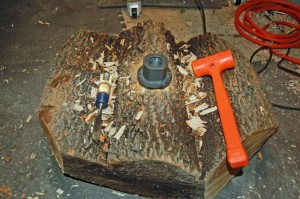
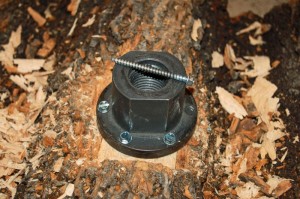
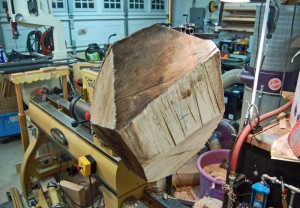
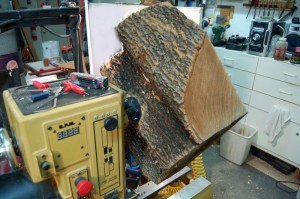
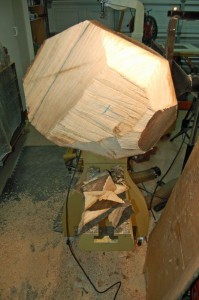
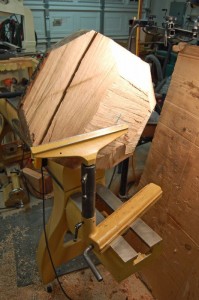
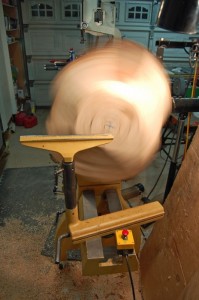
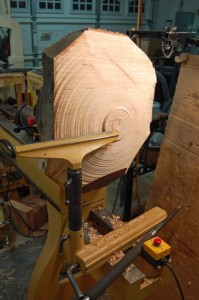
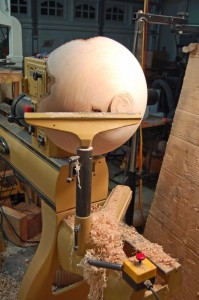
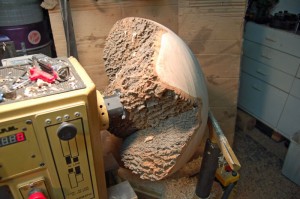
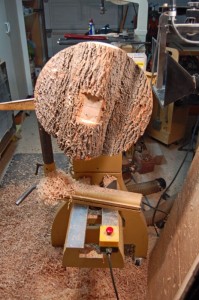
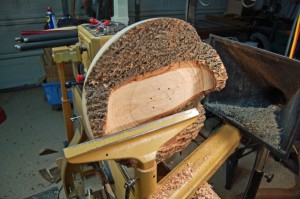
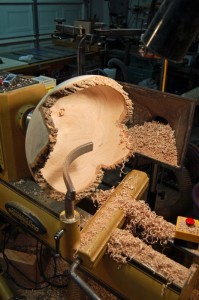
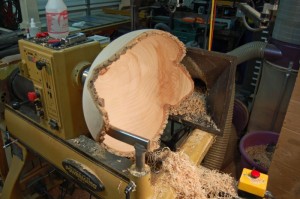
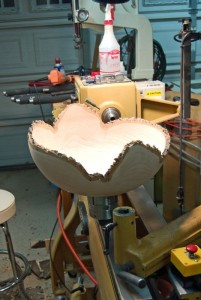
Comments
Leave a Reply
You must be logged in to post a comment.